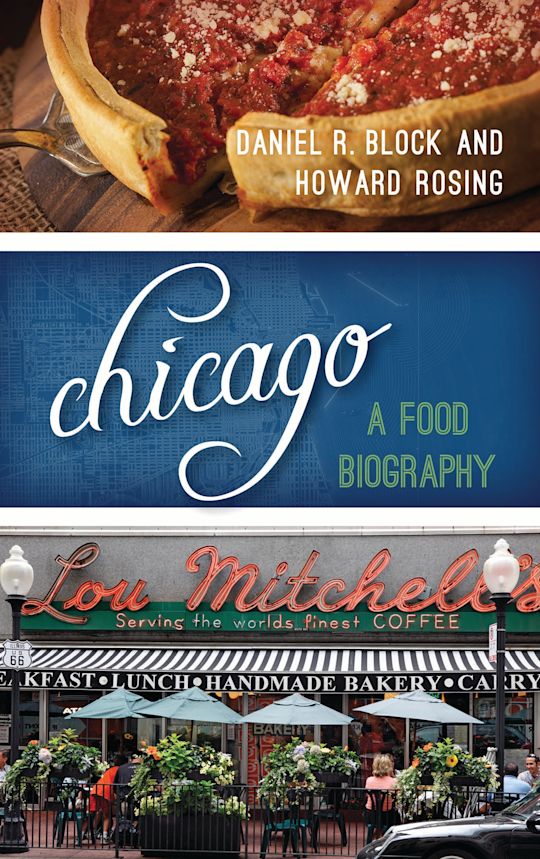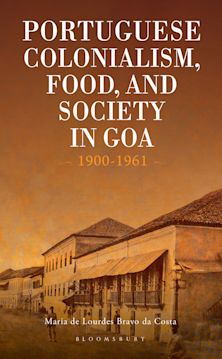- Home
- ACADEMIC
- Food
- Food History
- Chicago
You must sign in to add this item to your wishlist. Please sign in or create an account
Description
Chicago began as a frontier town on the edge of white settlement and as the product of removal of culturally rich and diverse indigenous populations. The town grew into a place of speculation with the planned building of the Illinois and Michigan canal, a boomtown, and finally a mature city of immigrants from both overseas and elsewhere in the US. In this environment, cultures mixed, first at the taverns around Wolf Point, where the forks of the Chicago River join, and later at the jazz and other clubs along the “Stroll” in the black belt, and in the storefront ethnic restaurants of today. Chicago was the place where the transcontinental railroads from the West and the “trunk” roads from the East met. Many downtown restaurants catered specifically to passengers transferring from train to train between one of the five major downtown railroad stations. This also led to “destination” restaurants, where Hollywood stars and their onlookers would dine during overnight layovers between trains. At the same time, Chicago became the candy capital of the US and a leading city for national conventions, catering to the many participants looking for a great steak and atmosphere.
Beyond hosting conventions and commerce, Chicagoans also simply needed to eat—safely and relatively cheaply. Chicago grew amazingly fast, becoming the second largest city in the US in 1890. Chicago itself and its immediate surrounding area was also the site of agriculture, both producing food for the city and for shipment elsewhere. Within the city, industrial food manufacturers prospered, highlighted by the meat processors at the Chicago stockyards, but also including candy makers such as Brach’s and Curtiss, and companies such as Kraft Foods. At the same time, large markets for local consumption emerged. The food biography of Chicago is a story of not just culture, economics, and innovation, but also a history of regulation and regulators, as they protected Chicago’s food supply and built Chicago into a city where people not only come to eat, but where locals rely on the availability of safe food and water. With vivid details and stories of local restaurants and food, Block and Rosing reveal Chicago to be one of the foremost eating destinations in the country.
Table of Contents
1: The Material Resources: Land, Water, and Air
2: Indigenous Foodways of Chicago
3: Migration and the Making of Chicago Foodways
4: Markets and Retail
5: From Frontier Town to Industrial and Commercial Food Capital
6: Eating at the Meeting Place: A Short History of Chicago's Restaurants
7: Chicago Street Food, Recipes, and Cookbooks
Product details
| Published | 03 Sep 2015 |
|---|---|
| Format | Ebook (Epub & Mobi) |
| Edition | 1st |
| Extent | 340 |
| ISBN | 9781442227279 |
| Imprint | Rowman & Littlefield Publishers |
| Illustrations | 3 b/w illustrations; 23 b/w photos; 4 textboxes |
| Series | Big City Food Biographies |
| Publisher | Bloomsbury Publishing |
About the contributors
Reviews
-
In so many diverse ways, Chicago is America’s heart. The nation’s waterways, railroads, highways, and air corridors converge on the city by the lake. Since the middle of the nineteenth century, Chicago has played a key role in food distribution throughout the nation. Its notorious stockyards and its massive grain storage towers moved the heartland’s bounty to the coasts and around the world. Immigrants brought their foodways, making the city a melting pot for every world cuisine. Block and Rosing document economic and cultural forces that have made the city a top destination for everyday eaters and earnest gourmets. They inventory unique creations beyond Chicago pizza and other native dishes, illustrating how the city’s cooks have influenced all of America, redefining Italian, Greek, and Mexican cuisine as well as manufacturing grain products, candy, and even popcorn. Through its stellar chefs, Chicago has lately revolutionized restaurant dining. Casual readers and scholars will both find something to savor here.
Booklist
-
You don't need anybody to tell you Chicago is a food city or to extol the virtues of chicken Vesuvio, deep dish pizza, a jibarito, South Side rid tips or a Vienna Beef hot dog (on a poppy seed bun, of course). Perhaps less well known is how Chicago's cuisine developed, or how the city became the first modern industrial food center, both of which are explored in Chicago: A Food Biography by Daniel R. Block and Howard Rosing.
Chicago Tribune
-
This book is a well-documented text written by two professors, Daniel Block (Chicago State University) and Howard Rosing (DePaul University), not a gossipy tell-all tale packed with juicy tidbits and anecdotes. In short, the book is both interesting and well worth reading.
ChicagoNow
-
Everyone is likely to learn something about Chicago food from this book, which has clear documentation and an impressive bibliography.... Given the wide scale of the historical and geographical approach in this volume, a reader who is looking for an overview of aspects of food in Chicago may find it useful to start here.
Digest: A Journal of Foodways & Culture
-
On Chicago’s South Side, hot dog stands sell ‘mother-in-law’ sandwiches, an American tamale in a hot dog bun with all the fixings. In other neighborhoods, Mexican green and red tamales are sold on street corners and in late night bars, still warm and accompanied by salsa. In the early 1900s, Chicago tamales were quite different from those contemporary American or Mexican versions, made with cornmeal rather than masa and sold by African American men who brought the ‘Delta’ tamale north from its southern origins. Historical details such as these make Daniel R. Block and Howard B. Rosing’s Chicago: A Food Biography shine.... More than a culinary history tour ... the volume offers a fascinating view of the city’s food traditions via community engagement, as both authors are active in neighborhood development and experiential learning.... Certainly a must-read for any Chicagoland resident interested in local food systems, the volume is important on a broader scale, as a way of seeing historical research bolstered by social engagement. Chicagoans will be delighted to learn or be reminded of important details: That their city was once the Candy Capital of the World, the ‘jibarito’ Puerto Rican sandwich originated in Chicago and enormous Asian groceries exist just beyond city limits. But academics and community workers will benefit from seeing historical understandings inform present-day social and political conflicts that play out across the food system. Academics might utilize the volume in courses on community food systems or as an example of an urban historical narrative, as it lends itself to topical selections of chapters for course readings. Such a well-researched book creates opportunities for future urban histories that take up social engagement. We hope that Block and Rosing continue such work and that other authors follow.
Agriculture and Human Values
-
A fascinating food history of Chicago, revealing the reasons, many unexpected, why this city’s cuisine is so diverse and rich. An essential read for anyone interested in food and culinary history.
Jennifer McLagan, the author of award winning Bitter:A Taste of the World's Most Dangerous Flavor, with Recipes



































